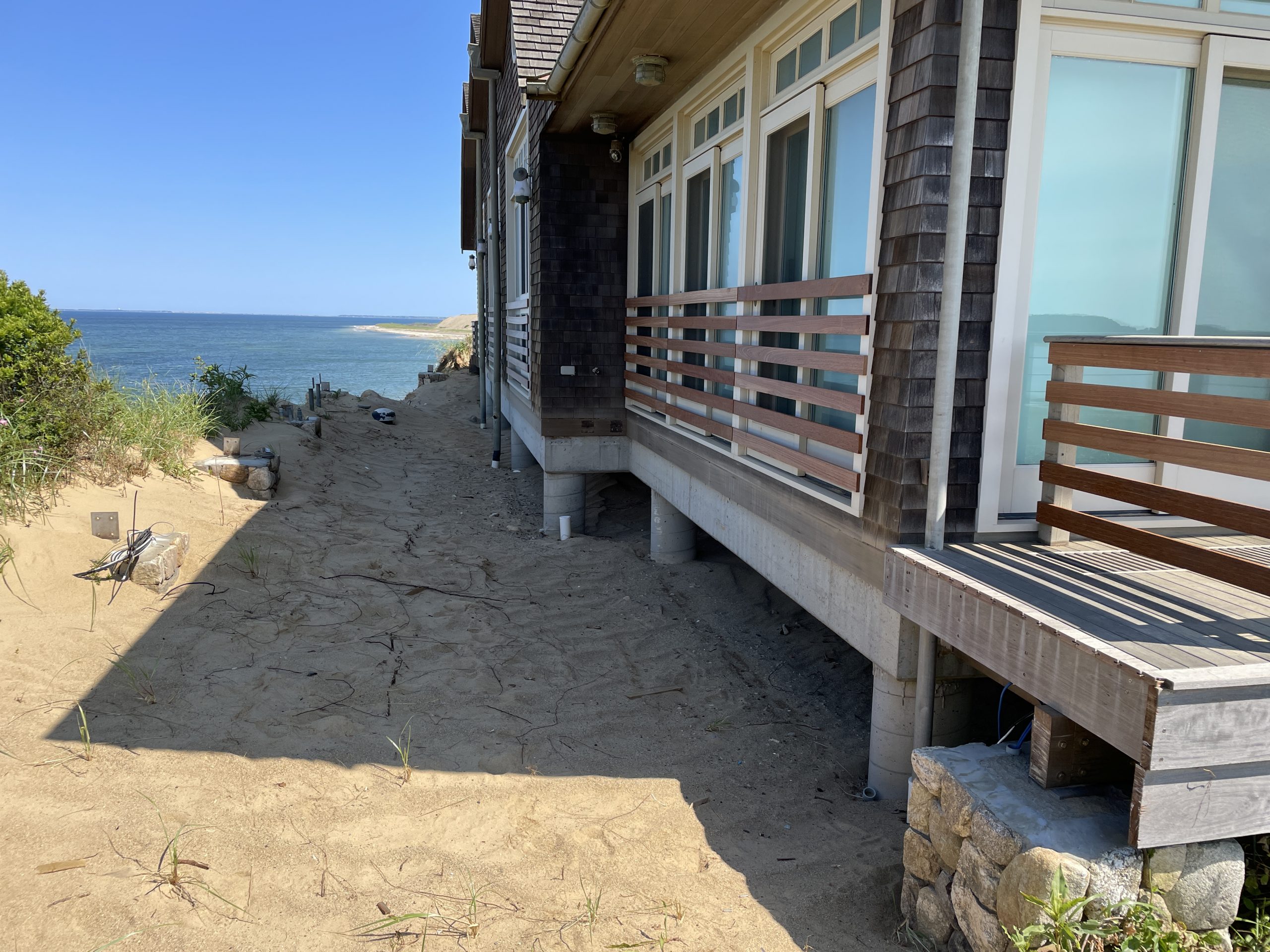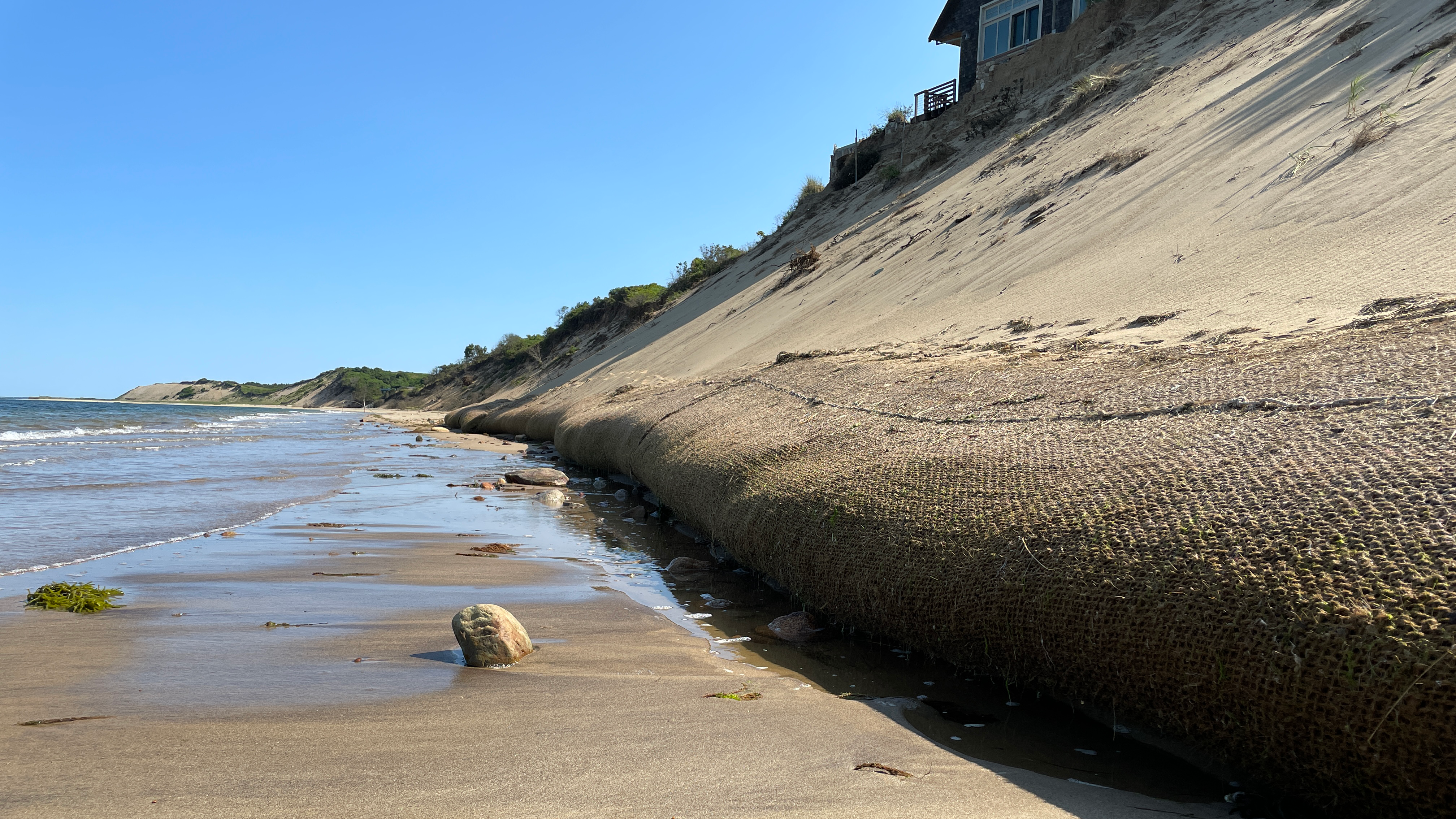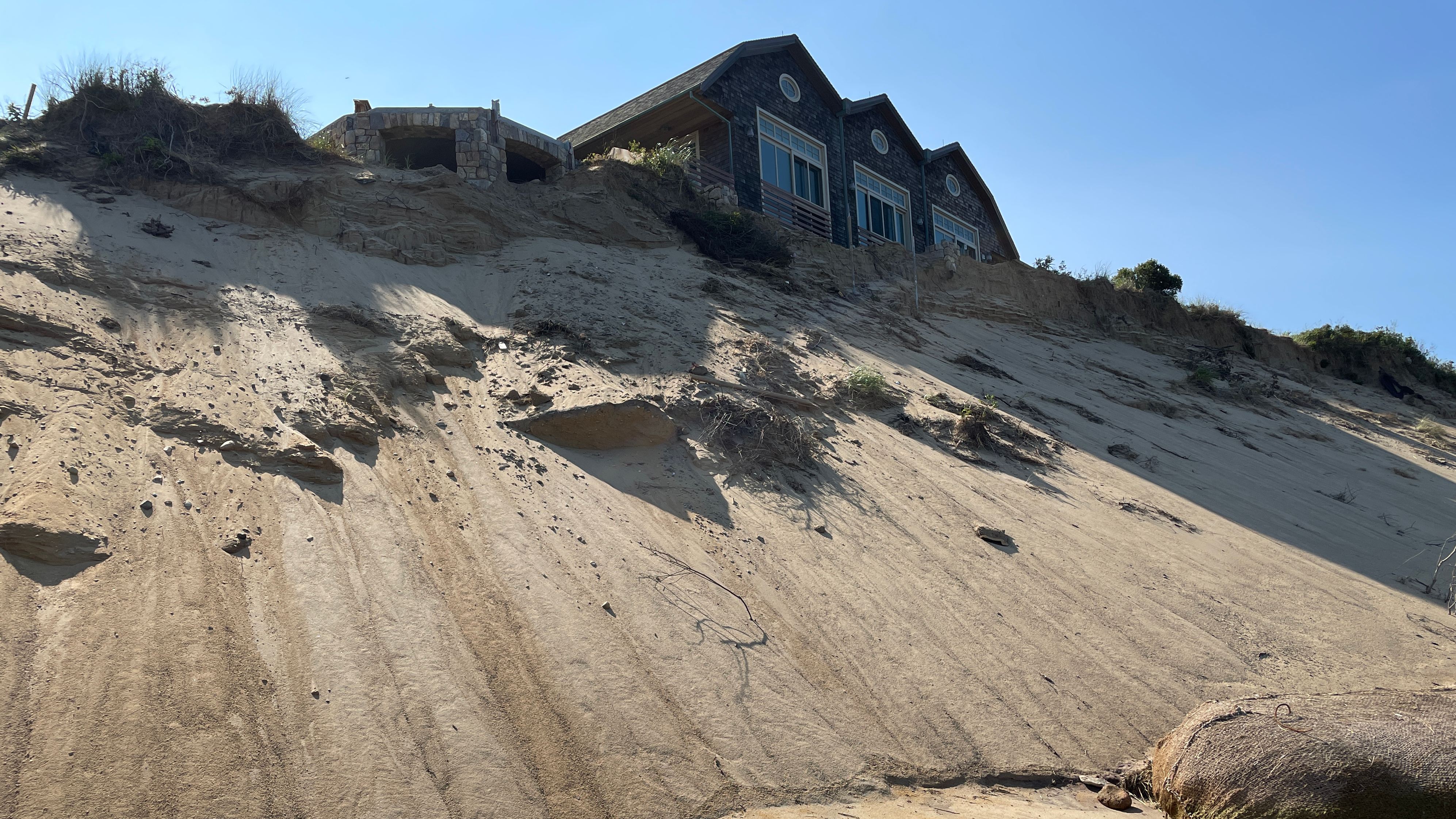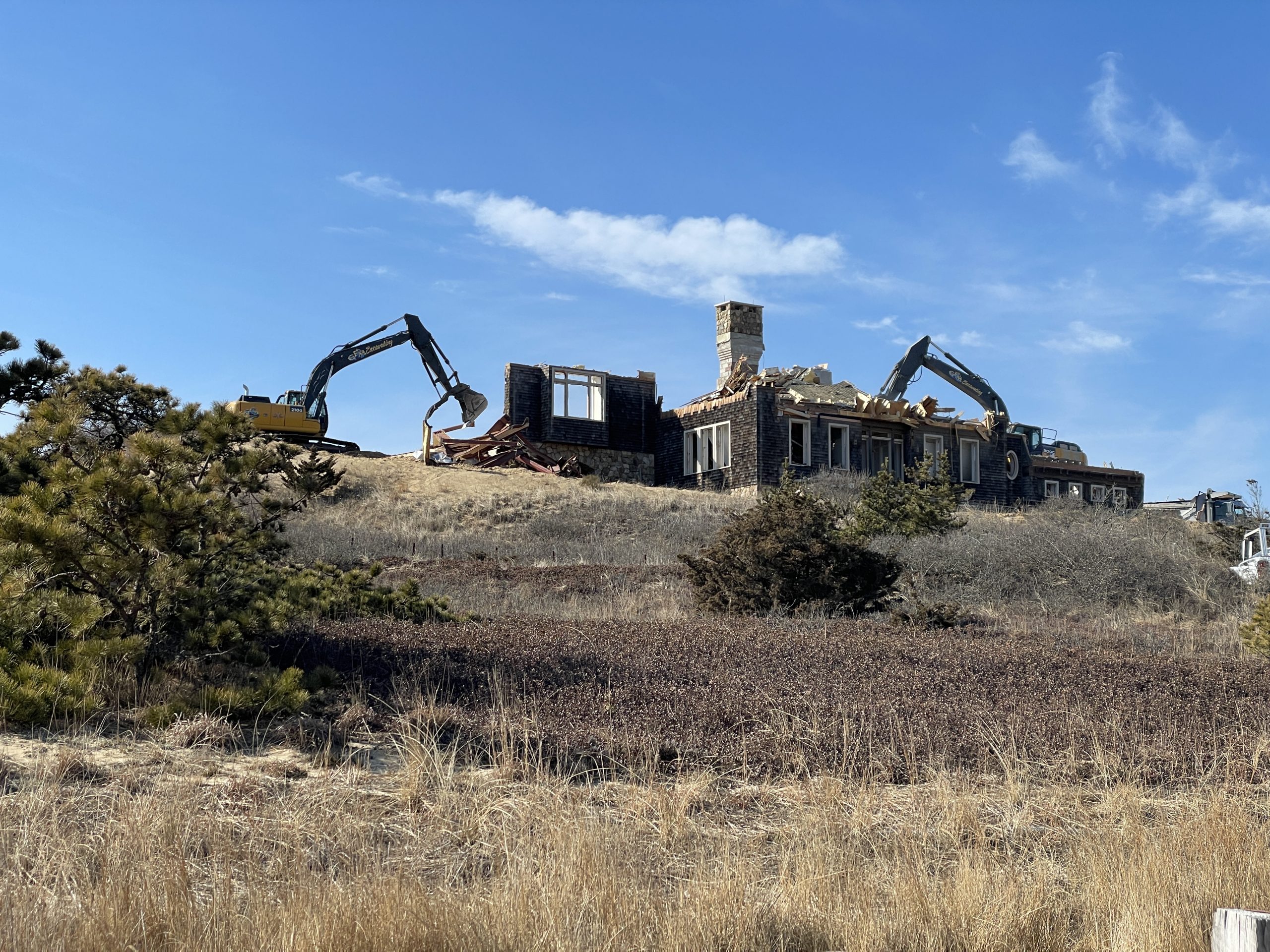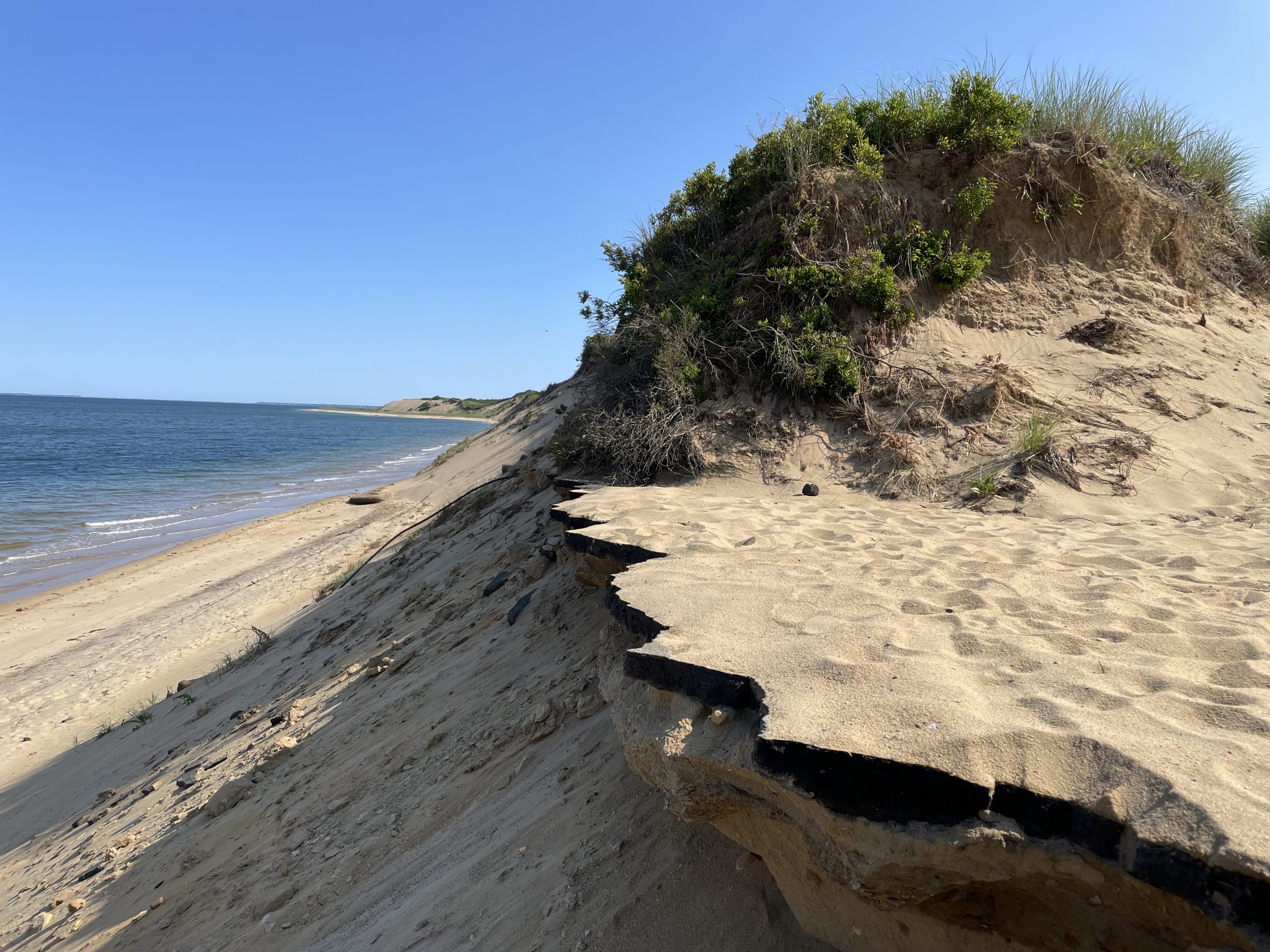Built Like a Tank, Lost to the Tide: How one Wellfleet house became a cautionary tale for coastal communities
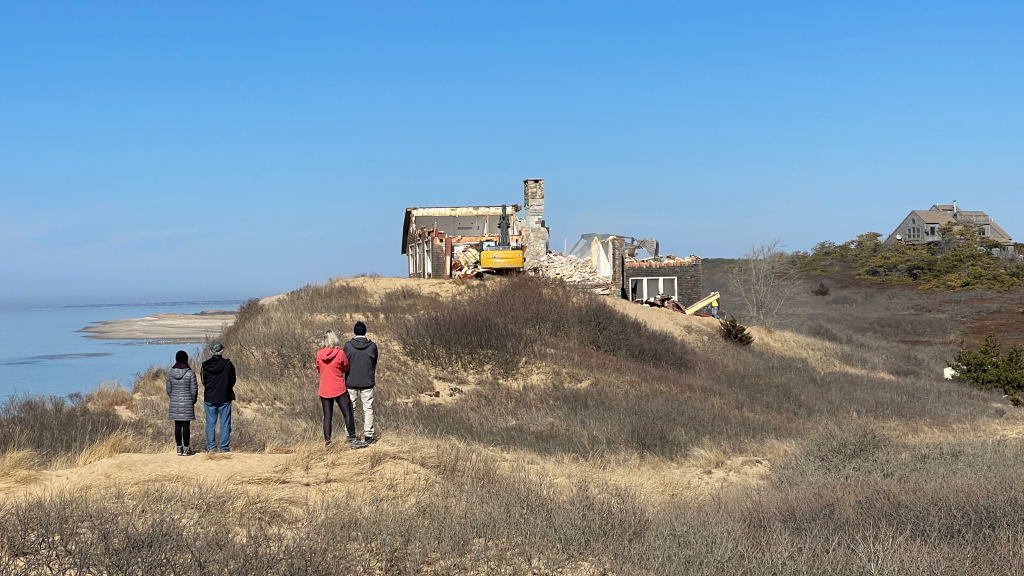
In 2010, owners of a property on Chequessett Neck Road in Wellfleet were permitted to remove their home and replace it with a 5800 square foot home in the grand Cape Cod style: five bedrooms, five bathrooms, two stone chimneys, a turreted sunroom, and an expansive porch.
Sitting on a bluff 20-feet above the beach with a panoramic view of Cape Cod Bay, the house was heavily engineered. With concrete-encased pilings extending 35 feet into the underlying bank, a 10-inch reinforced concrete slab, and steel support beams between its two stories, the house was built to last.
In February – 15 years after construction -- it was demolished, at an estimated cost of more than $1 million.
“This house was built like a tank,” says Bryan McCormack, WHOI Sea Grant and Cape Cod Cooperative Extension coastal processes specialist, who made a site assessment in 2024 at the request of the Town of Wellfleet. “It was never, ever, ever going to move unless the ground fell out from underneath it, which, unfortunately, is what happened.”
Each year, WHOI Sea Grant extension agents make approximately 30 such visits at the request of conservation agents across the Cape and Islands. It’s an uncommon service provided for free to towns to provide information about coastal processes and outlooks and to help them make better decisions on how to approach coastal systems, construction, and infrastructure. Says Wellfleet Conservation Agent Lecia McKenna: “Not only are the Conservation agents aware that we have that position in the county that's very valuable, but so do all of the people that are on the Conservation Commission.”
Because of the erosion on the Cape, the house on Chequessett Neck Road has been on the Wellfleet Commission's radar since it was constructed.
“When that house was built, it was outside of the required 50-foot buffer of the coastal bank, so there was very little the Commission could do. It was within state and local regs,” says McKenna. After several years with a number of severe storms, the bluff crept closer to the house – it lost 23 feet in a single year. “We all knew that it was going to happen sooner than later,” says McKenna. “And it very quickly became a problem.”

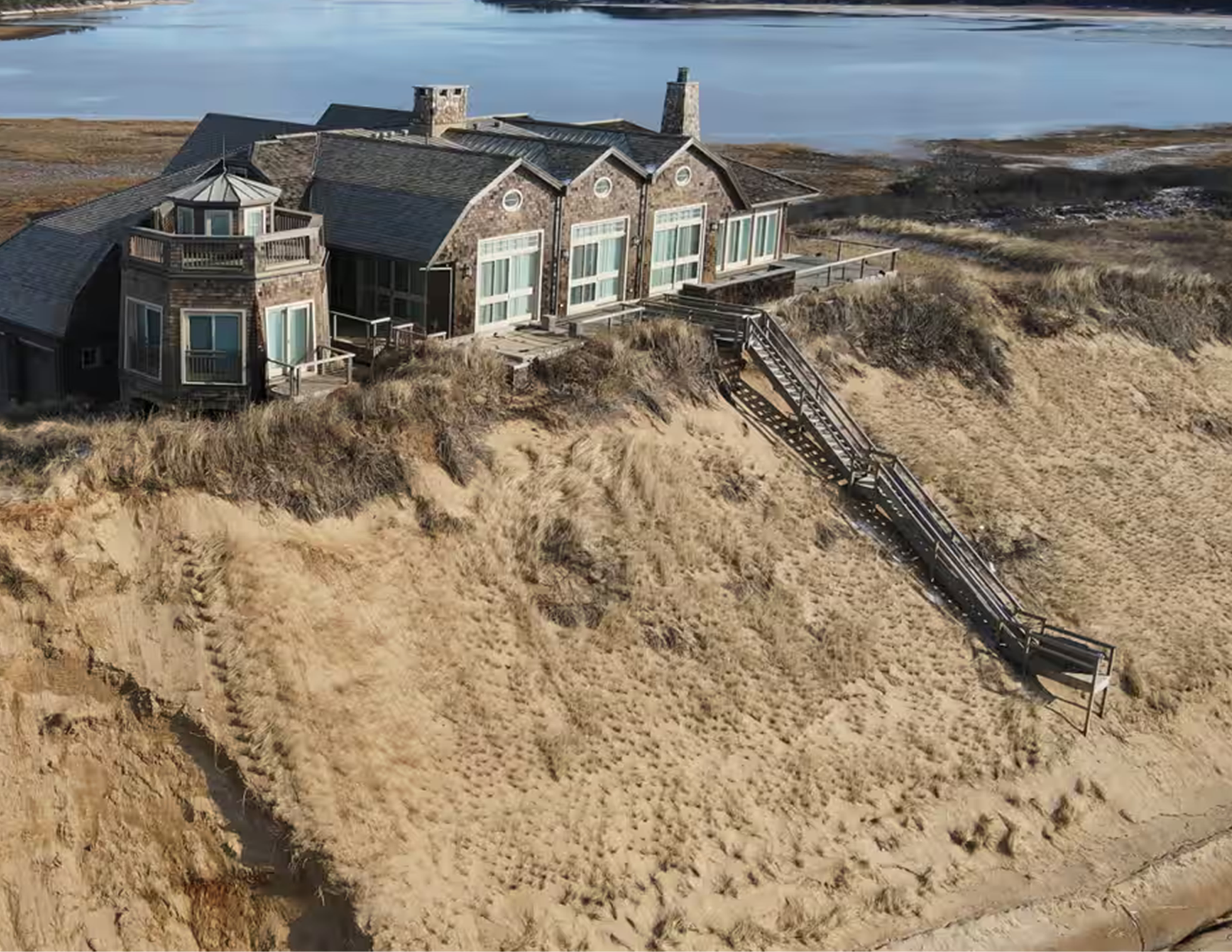
In 2018, the owners’ applied for permission to build a 241-foot seawall at the base of the bluff to protect the house. The town rejected the application, citing the Wetlands Protection Act regulations preventing actions that would impact coastal banks or dunes for structures built after 1978 – the year the Act was passed.
The owners appealed to the state Department of Environmental Protection, which rejected it, citing the same protections, and then the owners finally took their case to court.
Despite the on-going lawsuit and the ever-diminishing bluff, the house was sold in late 2021 for $5.5 million, and the lawsuit to erect the seawall was transferred to the new owner. But the courts move slower than the eroding shoreline, and by 2024, the town of Wellfleet was concerned about how long it would be before the house toppled into Cape Cod Bay. “The Commissioners brought it up at a meeting, saying we should get Bryan involved,” says McKenna, who reached out to McCormack for a third-party review of conditions at the site.
“Lecia called and said, ‘Hey, do you mind coming in and giving an update on the erosion and kind of an outlook on, you know, what a timeline might be?’” says McCormack.
During the visit, McCormack accessed LIDAR data and aerial imagery and did analysis on the long-term erosion and what had happened in the past decade or so, to see the variation in erosion rate over multiple timelines. He also poured over reports previous Sea Grant extension agents had made at the site over the years. McCormack found the house had receded 54 feet in ten years – far faster than the anticipated long-term erosion rates published by the Massachusetts Office of Coastal Zone Management. He estimated that in a best-case scenario, the house would remain viable for between three to five years. But given the erosion trends in the location, “it was very likely going to be much sooner, like in the next year,” McCormack says.
By the spring of 2024, the home’s deck was hanging over the edge of the bluff and the town required the deck be removed along with the adjacent octagonal turret because they were no longer structurally sound.
Despite the house no longer having the 50-foot buffer required when it was permitted, the town’s hands were tied. Until the house’s foundation was undermined, the town couldn’t require the house be removed. If nothing were done, the future of the house was clear and predictable: The house would soon fall into the ocean, damaging the beach, the Bay, and the near-by oyster farming businesses with the debris contained within it -- materials that can be toxic to the ecosystem. Cleaning up would be expensive, challenging and legally fraught.
Says Wellfleet’s McKenna: “We were thinking, ‘We can’t wait until the house is deemed uninhabitable. If we lost 10 or 20 feet in one storm, one storm could take the whole thing out.’”
Finally, in February 2025, after years of back and forth over the fate of the house and efforts to persuade the owner to remove it seemed to go unheeded, the drama was suddenly over. Word spread in town that a demolition crew had begun to dismantle the house.
“We’re fortunate that they did the right thing,” says McKenna. “If it fell in, it was likely to fall in one big piece sliding down the bluff. It would have been bad.”
“They started deconstruction on a Monday morning,” recalls McCormack. “The weekend prior, the owner had Habitat for Humanity come in, pull out doors, cabinets, you know, everything that they could salvage. So, yeah, that's a really good way to do it if you're kind of stuck in the situation.”
“This is a really good lesson that I think should be talked about far more often with any eroding banks, whether they're inland or coastal,” says McKenna. “When issuing these permits, there should be conditions ongoing in perpetuity, conditions that say, once the structure is within a certain distance - to be determined - from the bank, it has to be removed.”

